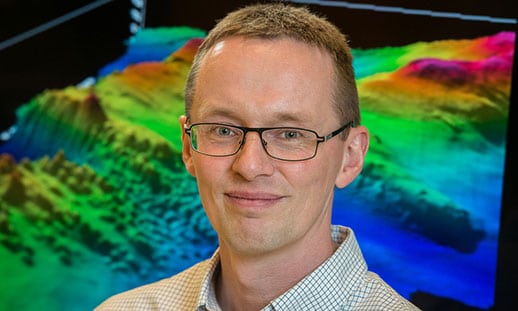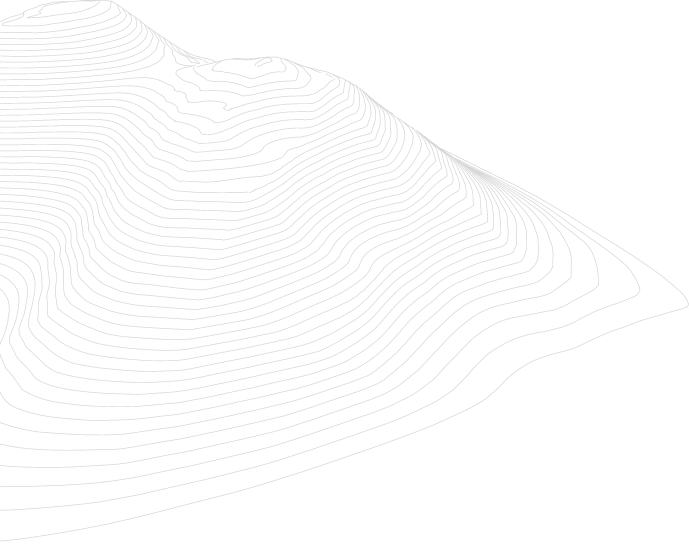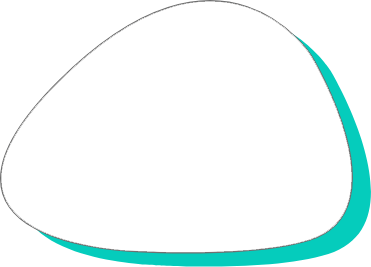
Five years ago, research scientist Dr. Craig Brown learned that R2Sonic was intent upon revolutionary new ways of collecting and using multifrequency backscatter data. Given his own quest to explore the possibilities with backscatter data, the collaboration together was only natural.
Over the past two decades, Dr. Brown, Associate Professor of Oceanography at Dalhousie University, has focused his research on the application of echosounding and using sonars to study, map, and monitor seafloor habitats and ecosystems.

After his Ph.D., Dr. Brown’s began his research focusing on seafloor habitat mapping at different research centers and universities. As the field evolved, while bathymetry became the focus for many scientists and industries, Dr. Brown focused on backscatter data. As he worked with and extracted information from data sets, it became clear that backscatter data was going largely unexplored and underutilized. This was a missed opportunity.
"Understanding and using backscatter data is critical for understanding geological and biological patterns on the seafloor"

Surveying an area at different frequencies provides additional information about the seafloor characteristics. Each frequency gathers new and different data, which makes it a critical tool for bottom characterization research. Knowing this, Dr. Brown began a series of surveys in Bedford Basin, at the northwestern end of Halifax Harbor on Canada’s Atlantic coast. At the time, he surveyed the area multiple times, setting up each pass at a different frequency.

When he became aware of R2Sonic’s multifrequency capability, he was eager to test it. Rather than multiple passes, he would be able to gather all the data in one single pass and with one MBES across the basin. In 2015 in Bedford Basin, he had his first opportunity. As the data came back from his initial surveys, he was thrilled with the results:
“In multispectral mode, the very obvious differences between frequencies confirmed what we suspected to be the case, and that we could collect them all with one pass off the survey vessel was very exciting. These types of data sets are game changers in terms of how we can understand seabed ecosystems.”

The research field is wide open, and Dr. Brown refers to it as an “eye-opener”, just how little we know about this type of data and how we can use it to full advantage.
"There’s still a lot of work that needs to be done to understand the backscatter signals, and what data we can squeeze out of the information. The more information you can gather across those different frequencies will tell us a lot more about the environmental conditions in a particular area. The more information across those frequency bands, the more we’ll understand about habitat patterns on the seabed."

An active member of GeoHab (Marine Geological & Biological Habitat Mapping), and coming from an academic world, Dr. Brown is an advocate of linking this type of research with industry engagement. MBES systems are expensive and funding for research projects is not always readily available.
Dr. Brown embraces the collaborative spirit of the work, with the goal to help the research community by improving available seafloor sensor technologies, developing new systems, and refining the way that data from complementary sensor systems can be integrated to produce ocean floor maps.
"I’m always interested in how we can use sophisticated tools to classify the multibeam data to help us understand biological and geological patterns. The support that R2Sonic has provided is fantastic."

Prior to joining Dalhousie University in 2019, Dr. Brown was an NSERC (Natural Sciences and Engineering Research Council of Canada) Industrial Research Chair in Integrated Ocean Mapping Technologies at the Nova Scotia Community College (NSCC), in Dartmouth, Nova Scotia.

University of Bremen & University of Washington
TU Delft
- 1
- 2




R2Sonic Multibeam Echosounders

